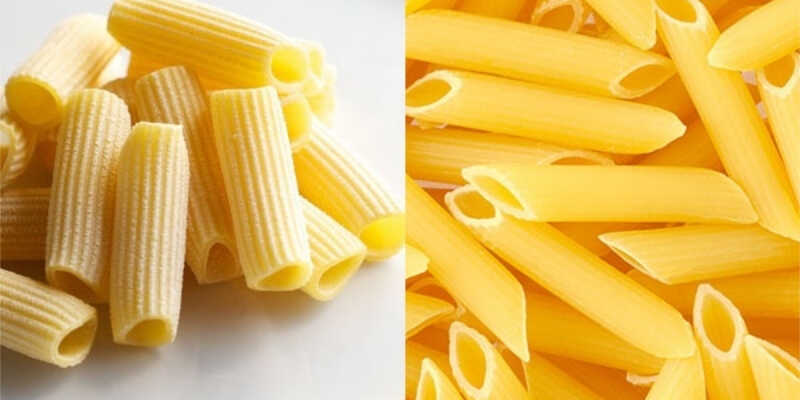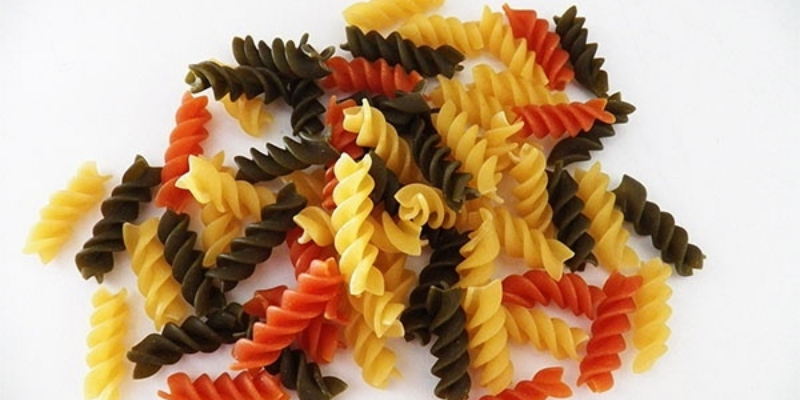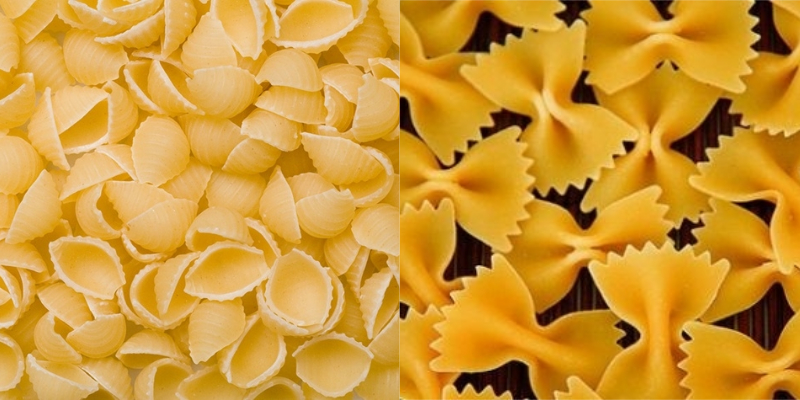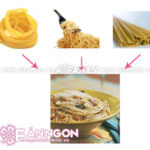1 Choosing the Right Pasta for Your Dish
Penne Pasta: Great for Stir-fries, Soups, Creamy Sauces, or Baked Cheese Dishes
 Penne pasta is versatile and works well in stir-fries, soups, creamy sauces, or baked cheese dishes.
Penne pasta is versatile and works well in stir-fries, soups, creamy sauces, or baked cheese dishes.
There are several types of penne pasta with different names. Depending on the manufacturer, they come in various lengths and widths, but they generally have a cylindrical, straight shape, with or without ridges, and a flat or angled end.
This group of pasta is fantastic for creating a variety of delicious dishes. However, it is best suited for stir-fries, bone broth pasta, creamy sauces, or baked cheese pasta.
Fusilli Pasta: Softer and More Flexible than Penne, Making it a Popular Choice for Kids’ Meals

Fusilli pasta has gained popularity in Vietnamese cuisine. It is softer and more flexible than penne, making it a common choice for young children.
True to its name, fusilli pasta has a uniform, small spiral shape, approximately 4-5 cm in length. It can be used in stir-fries, sauces, or combined with other ingredients in a salad. However, when cooking with this type of pasta, it is advisable to use quick-cooking ingredients or chop them into smaller pieces to prevent overcooking the pasta, which can make it mushy and unappetizing.
For further reading:
Farfalle and Conchiglie Pasta: Thin and Soft, Perfect for Salads and Soups

These two types of pasta are less common than the previous two groups. As their names suggest, they resemble small bows or shells. Due to their multiple folds, they tend to be thin, soft, and pliable.
Farfalle and conchiglie pasta are ideal for salads and soups. However, when cooking with them, it is crucial to pay attention to the timing to avoid overcooking and turning them mushy.
2 Secrets to Cooking Delicious Pasta
– Typically, pasta is boiled for 5-8 minutes, depending on the type. However, if you add pasta to already boiling water, you may find that it cooks unevenly. For the best results, it is recommended to add pasta to cold water and bring it to a boil, as this allows the pasta to soften and cook evenly without becoming mushy.
– Adding salt to the water enhances the flavor of the pasta after boiling.
– A few drops of lemon juice in the water, along with stirring, help prevent the pasta from sticking together.
– After boiling, pasta should be immediately immersed in ice-cold water to retain its chewiness. Softer pasta, such as fusilli or farfalle, does not require ice water; simply drain and set aside. Instead of cooking them directly on the stove, it is advisable to sauté the ingredients and mix them with the pasta while it is still warm.
– If you plan to cook pasta in broth, soak the pasta in warm water for 30 minutes beforehand. Add the pasta at the same time as hardy vegetables like carrots and daikon radish.
– For baked pasta dishes, penne is an excellent choice. Farfalle or conchiglie are better suited for creamy sauces. It is recommended to prepare these dishes while the pasta is still warm. Check out more pasta recipes to treat your family.
We hope that these simple tips on choosing and cooking pasta will help you create mouthwatering, tender pasta dishes for your loved ones.































